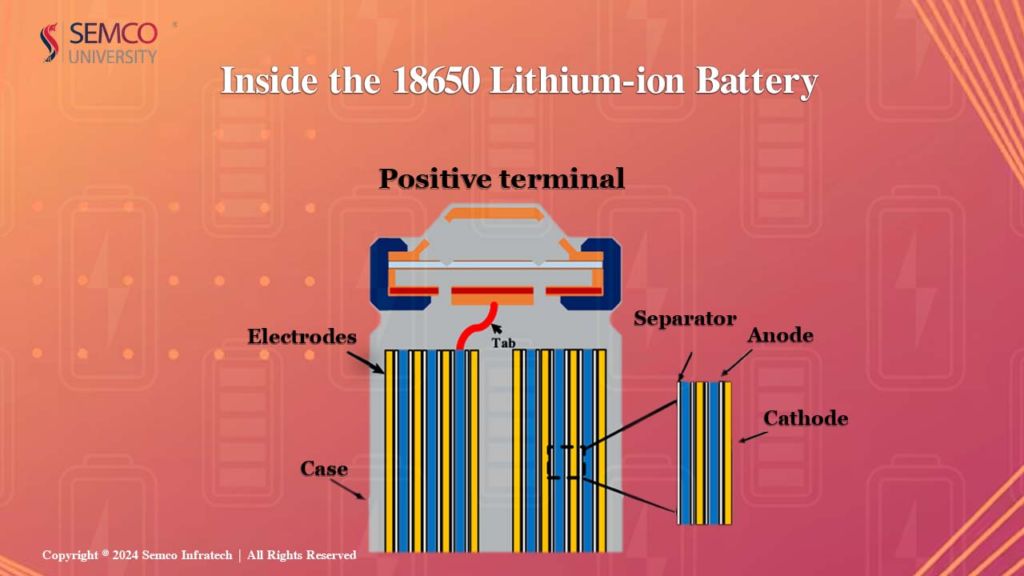At the heart of many portable electronics lies the 18650 lithium-ion battery. But how exactly does this workhorse store and release energy? Let’s delve into its core principle.
The Rocking Chair Analogy: Charging and Discharging
Imagine a rocking chair. One side is the positive electrode (cathode), the other is the negative electrode (anode). Lithium ions act like energetic people constantly moving between these sides. During charging, lithium ions are “pumped out” of the cathode and travel through a special electrolyte solution to the anode, embedding themselves in its carbon structure. The more lithium ions stored, the greater the battery’s charge.
Discharging is the rocking chair in action. The embedded lithium ions now flow back to the cathode, generating electricity as they move. The more ions that return, the higher the discharge capacity, which is the battery’s usable power. This constant movement of lithium ions back and forth between electrodes is why lithium-ion batteries are sometimes called “rocking chair batteries.”
Manufacturing the 18650: A Step-by-Step Look
Making an 18650 battery involves five main sections:
- Pulping: Raw materials are weighed, mixed, and turned into a slurry. This section is crucial for accurate battery performance.
- Slicing: The slurry is coated onto a thin film, then rolled and cut into electrode strips. This stage differs slightly depending on the battery type (cylindrical vs. soft pack).
- Winding: The electrode strips are carefully wound into a compact core for cylindrical batteries. Soft-pack batteries use a laminating process instead.
- Assembly: The core is placed in a metal shell, electrolyte is injected, and the battery is sealed. This stage involves multiple steps like laser welding and cleaning.
- Forming and Capacity Separation: The battery undergoes controlled charging and discharging cycles to activate it and measure its capacity. This step ensures consistent performance.
The Importance of Understanding Battery Manufacturing
Knowing the manufacturing process highlights the intricate steps involved in creating a reliable battery. It also explains why slight variations might exist between different manufacturers.
In conclusion, the 18650 lithium-ion battery relies on the movement of lithium ions for its operation. Understanding this core principle, along with the manufacturing process, provides valuable insight into how these powerhouses come to life.

